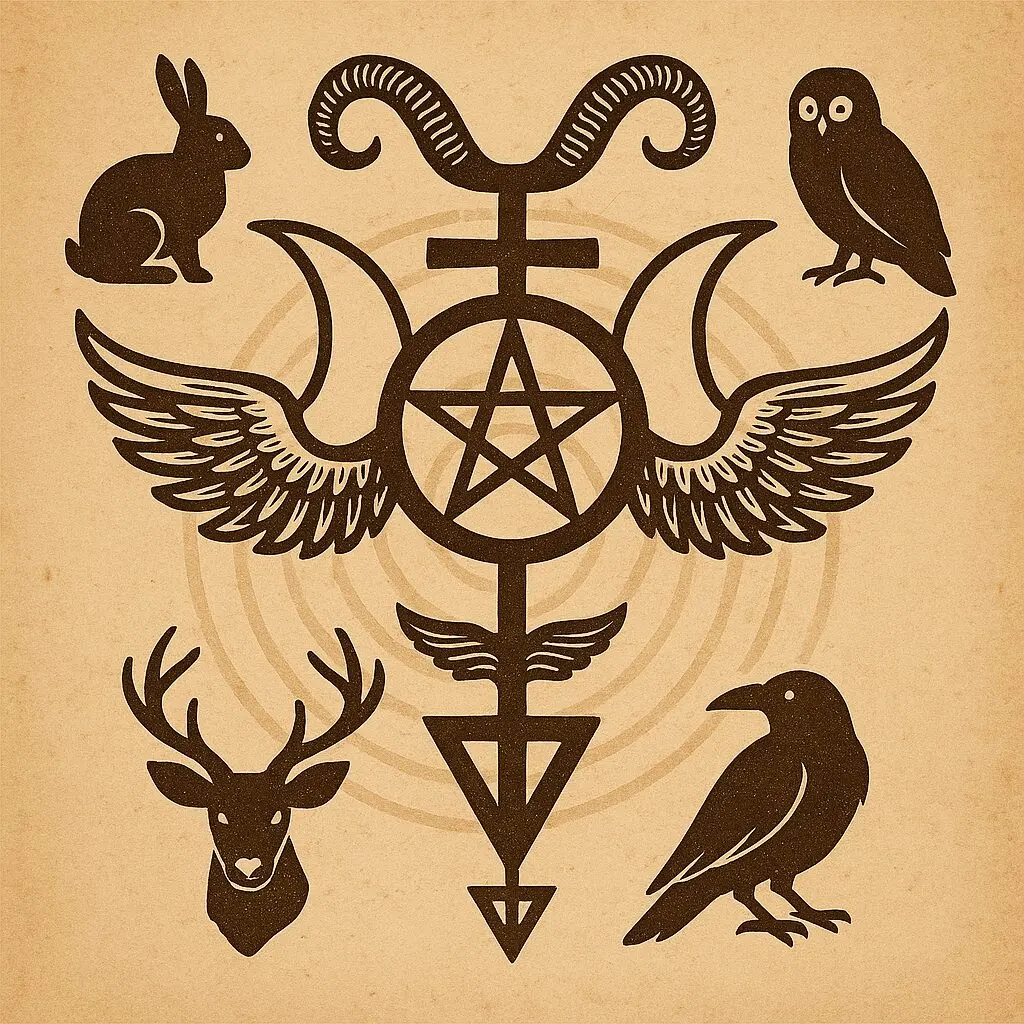From the First Circle to the Rising Moon

We have always been here.
Before the word “witch” was inked into any book — before the first king carved his name into the bark of the world — we walked between the realms of the seen and unseen. We were the watchers at the fire, the gatherers of herbs at dusk.
The name came later. The work was already ours.

In the Celtic lands, the ban-druí — women druids — held prophecy in one hand and the people’s trust in the other. They stood at Beltane fires, calling blessings over warriors, lovers, and herds. They tended wells sacred to the goddess, speaking charms in the dark so the water would rise clean and plentiful. Some rode to war alongside kings – others shaped the course of peace with a single sentence spoken at the right time.

In the Norse North, the völva wore the deep blue cloak and carried the staff of seiðr — the weaving of fate. She could shift the winds for a ship’s voyage, or see the shadow of death before it fell. Men like Odin himself sought this craft, though they risked the scorn of those who called it “unmanly.” And there were men who practiced still, quiet and steadfast, reading omens in the flight of ravens and the sigh of the ice.

In the Mediterranean, priestesses of Hekate stood at the crossroads, torches lit, calling wisdom from the dark. The pharmakeia — healers, midwives, and, when needed, poisoners — understood the power of plants: that the same herb could save a life or end it. They anointed statues, read dreams, and guided the dead.
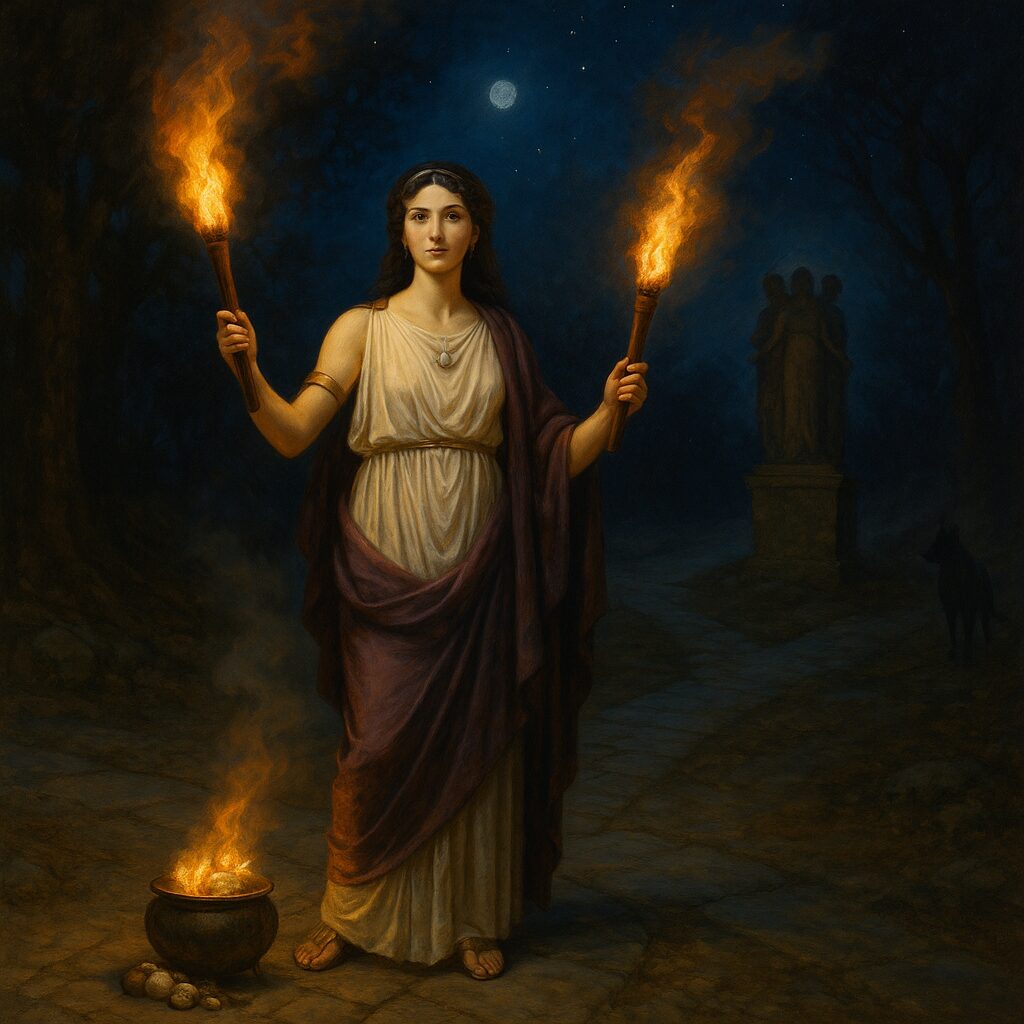
In Slavic villages, wise women – the znakharka and vedma knew the hum of bees and the language of water. They blessed the fields before sowing, laid bread and salt in the furrows, and whispered to the orchard trees to wake in spring. Men, too, were znakhari — healers who made charms for protection and eased childbirth with herbs boiled in beer.
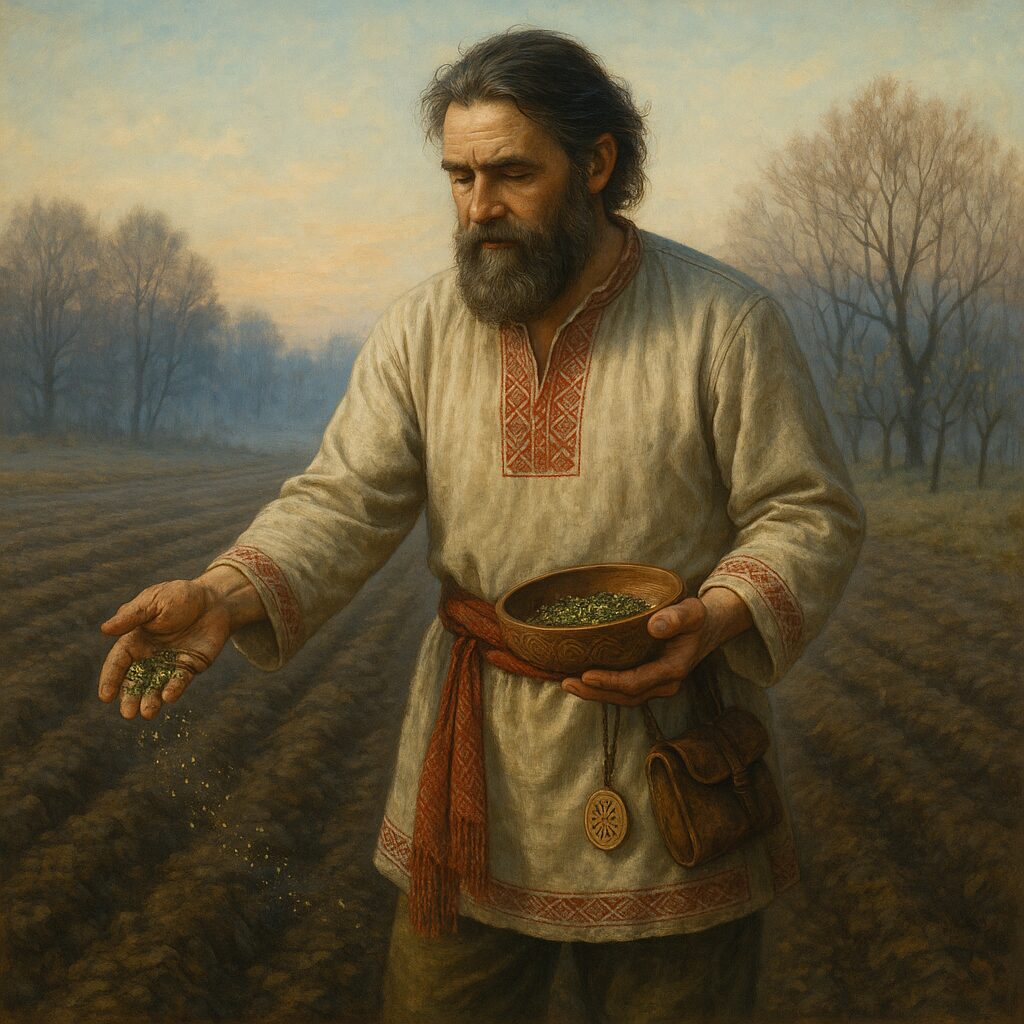
We were the keepers of cycles, the singers of weather, the ones who remembered the first names of things. We worked with the spirits of the land — not demons as later claimed, but echoes of the world’s oldest agreements: “Tend us, and we will tend you.”

The turning came with a narrowing of the world. One god, one church, one truth — or so it was said. We who carried many gods, many truths, and many ways of speaking to the unseen became suspect.
The healer became the poisoner. The midwife became the murderess. The wise man became the warlock in service to Hell.
Famine and plague struck. Armies clashed. And in such times, a scapegoat is as comforting to the powerful as bread is to the starving.
They began to tell stories about us — stories that were not ours.

They said we brewed tempests in eggshells, shaking them until lightning cracked. They said we drowned sailors for sport, and sent hail to ruin the wheat.
One woman in Denmark was accused of stealing the wind itself — selling it in knotted ropes to fishermen, each knot loosed for a different strength of gale. A cunning man in Cornwall was accused of tying such knots to keep sailors from returning home until their wives paid ransom.
The truth? We knew the signs of weather the way a weaver knows her loom — the scent before rain, the thin blue at the edge of the morning sky, the ring around the moon that warns of storms. Knotted cords and whispered charms were not weapons, but prayers: calls for safe passage, for fair winds, for mercy from the skies.
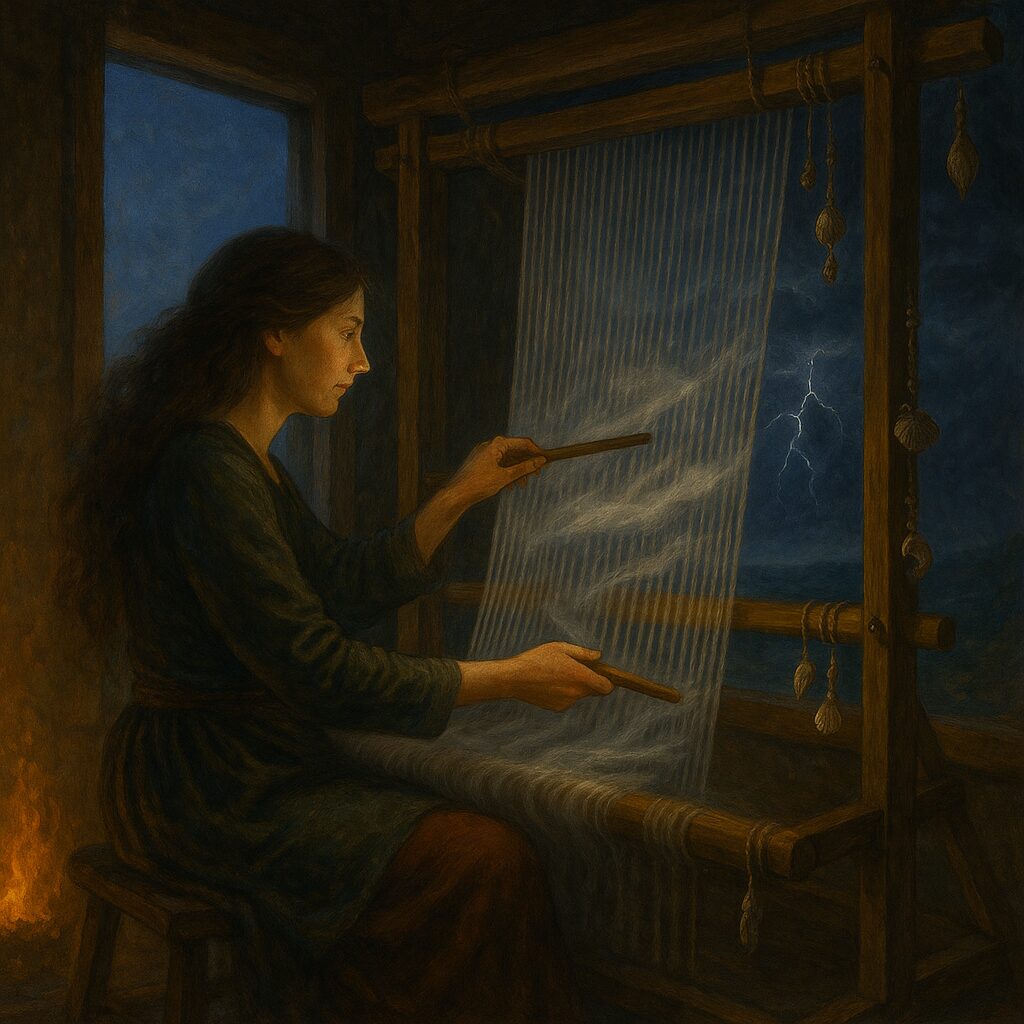
They said we lay with Satan in the night, signing his book in blood and giving him our bodies in lust.
In one 15th-century German trial, women were accused of kissing the Devil’s backside in exchange for “freedom to dance and drink.” In parts of Italy, they claimed witches went to lavish banquets with the Devil, eating cheese and wine before engaging in “indescribable lewdness.”
The truth? The body has always been sacred in the old ways — not shameful. Our rites honored the union of earth and sky, of seed and soil, of passion and joy. To dance under the moon, to join in the Great Rite, was to affirm life. And those “indescribable” acts? Often nothing more than gatherings for song, feast, and fellowship — acts threatening only to those who feared joy outside their control.
For men, the accusation often took another form: “unnatural affections.” Inquisitors used the word to mean love between men — or even simply dancing together without women present. One Swedish farmhand confessed to “naked dances with men at Blåkulla” — his way of describing drunken revelry, not demonic pact.

They said we flew to the sabbat on broomsticks, pitchforks, even roasting spits. In one French tale, a witch supposedly flew to a gathering in a walnut shell, wearing a cloak made of mouse fur.
The truth? The besom was — and is — a sacred tool of cleansing, used to sweep away stagnant energy before a ritual. Some anointed its handle with ointments made from herbs that, in certain doses, cause vivid dreams or trance states. In those visions, the spirit could indeed “fly” to meet with others, gods, and guides.
And those walnut shells? Likely the misremembered bones of folk tales, where the magical is small and portable — the same way children’s rhymes speak of sailing in sieves and frying pans.

They said our cats and rabbits were demons in disguise, sent to spy for Satan. In England, a woman named Elizabeth Francis was accused in 1566 of owning a cat named Sathan who demanded a drop of her blood each week in payment.
In Scotland, one poor man was accused of sending a talking crow to curse his neighbor’s cows. The “crow” turned out to be a very annoyed blackbird that had learned to mimic words.
The truth? Animals have always walked beside us. Cats kept the mice from the grain; toads lived in the garden and ate pests; birds brought messages of season and change. Some of us worked magically with these companions, asking their help as we might ask the wind or river’s edge. The blood they said we gave them? Likely no more than the scratches any cat-owner will know too well.

They said we became hares to steal milk, wolves to hunt livestock, mice to sneak into pantries. In 1662, Isobel Gowdie of Scotland “confessed” to turning into a hare to escape a man with a hunting dog — her confession so full of detail it reads like a dream-story, not a crime.
One German woman was accused of shrinking a man’s genitals and hiding them in a bird’s nest. This “proof” came entirely from an inquisitor’s imagination, spurred by fears of female sexual power.
The truth? Shape-shifting belongs to the language of spirit and story. In trance, we might wear the shape of the wolf or hare to travel between worlds. In dream, we might run with the herd or fly with the flock. But we never robbed men of their parts to keep in a nest — though it’s tempting to imagine the expression on their faces if we could.

They said we bound ourselves to goblins, faeries, storm spirits — not in alliance as the folk once believed, but as slaves to their malice.
In truth, we did and do work with spirits — but not in the way they thought. These are not grotesque imps of hellfire, but echoes of the land, the memory of rivers, the dream of the forest. They do not serve us – we walk alongside them.

We survived.
In whispered charms over a child’s cradle. In the laying of salt on the sill. In the candle lit at the new moon. We wore other names — wise woman, cunning man, herb-wife, fairy doctor — and let “witch” lie quiet for a time.
In the 19th century, collectors like Charles Leland (Aradia, or the Gospel of the Witches) and Lady Wilde gathered the old stories, sometimes faithfully, sometimes fancifully. In the early 20th, Margaret Murray argued, controversially, that witchcraft was the remnant of a pre-Christian fertility cult. Whether or not her theory was correct, it rekindled the idea that we had been here all along.
From the occult revival rose Gerald Gardner, who in the 1950s brought Wicca into the public eye. With Doreen Valiente giving the rites their poetry, Wicca reclaimed the name “witch” as something to be spoken with pride. The Wheel of the Year, the honoring of the elements, the casting of the circle — all wove the old threads into a visible, living practice once more.
Now we claim the broom, not for flight to devil’s feasts, but for cleansing and blessing. We keep the cauldron, not for brewing storms in eggshells, but for transformation and creation. We dance naked with our friends — because joy is sacred.
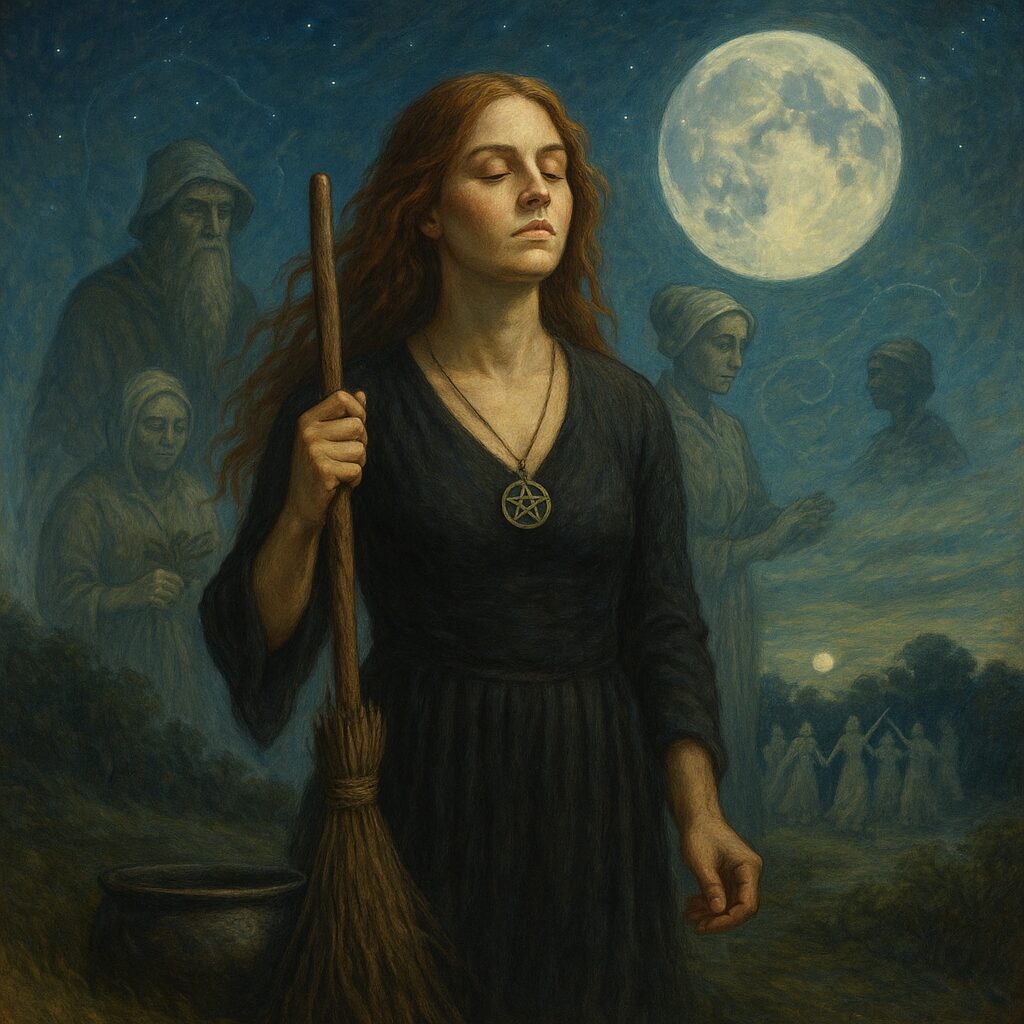
We rise from the shadows, not as the figures of fear painted by those who would own our stories, but as the authors of our own truth.
We are the children of healers, seers, dreamers, and protectors. We are the ones who survived the noose, the fire, the jeering crowd — and still gathered under the moon.
The myths are still told. Let them be told. We know their shape, and we know the truth they tried to bury. For every walnut shell we “flew” in, there is a truth of trance and vision. For every shadow we were said to sell, there is the light we carried forward.
We are the keepers of the circle. The word “witch” is ours again, spoken without fear, with pride and with love.
We have always been here. And we will not be forgotten.
Across centuries, witches have been imagined through a set of powerful masks—some crafted to honor wisdom, some shaped to frighten, blame, or control. These figures are less “true identities” than echoes of how society has viewed those who live close to land, mystery, healing, or the edges of ordinary life. Here, we gather these archetypes not as fixed labels, but as mirrors: stories once used to elevate, to warn, or to persecute. By naming them, we reclaim them, accepting only what serves and letting the rest fall away like old ash.
Faces of the Witch Through Time
Not one person, but many masks at the threshold of the seen and unseen.
One face of the witch is utterly ordinary: hands in flour, smoke curling from the stove, jars of herbs lined up beside the salt. The Hearth-Keeper is the auntie, grandmother, or neighbor whose kitchen always smells faintly of bread and rosemary, who knows which tea will calm a racing heart and which charm to hang above the doorway. Her work is quiet and constant, woven into food, cleanliness, and care. In many villages this figure kept sickness at bay, eased births and deaths, and held stories of the family line. Because she did not wear temple robes or stand in front of an altar, she was often overlooked by official histories, yet whole households and farms leaned on her craft without naming it as such.
“The terrain of the mysteries is the ordinary. To seek out mystery, we don’t have to go anywhere.” — Starhawk
The Hedge-Walker lives where the fields give way to thicket and wildwood, at the last garden gate before the dark trees close in. This witch knows the paths that run between waking and dreaming, village and forest, living and dead. She keeps company with crossroads, old wells, and boundary stones, moving in and out of altered states to seek guidance or healing. In many traditions this was the one who “went out” by night, not necessarily in body but in spirit, to the sabbat or to the ancestors’ halls. Communities often sought her help for protection or divination, even as laws and sermons learned to fear anyone who traveled too easily beyond the hedge.
“The land is the real teacher. All we need as students is mindfulness.” — Robin Wall Kimmerer
The Storm-Caller is the witch in old tales who whistles up a wind or stills the sky with a gesture. Sailors once spoke of women who could knot breezes into cords and sell fair weather, farmers of those who knew what offering might soften a hailstorm or call the rain. This archetype stands in relationship to the restless powers of air and sea, not as their master but as a negotiator who understands that weather is alive in its own way. Later teachings condemned any sign of ease with thunder and lightning as a sign of infernal favor rather than of intimacy with the land and sky. Yet in many places the memory remains of “that one” who could read clouds, speak to storms, and help a community survive a difficult season.
“Magic is the art of changing consciousness at will.” — Dion Fortune
The Shadow-Friend keeps company with what others prefer not to name. This witch sits beside beds of the dying, listens to unspeakable secrets, and works with grief, envy, rage, and fear instead of pretending they do not exist. In haunted stories, she is the one who knows the name of the restless spirit and what must be done to soothe it. In ordinary villages she may have been the person you visited when guilt burned in your chest or when you had exhausted polite prayers. Because she remembers what a community tries to bury, she can become a convenient target when something goes wrong, yet her very willingness to look at the dark is what allows others to heal.
“Beware of organizations that proclaim their devotion to the light without embracing, bowing to the dark.” — Starhawk
Beneath many names stands the witch as keeper of memory. The Story-Keeper carries folk songs, charms, lullabies, and fragments of prayer from one generation to the next, often by simple repetition at the fire or in the fields. She might be an elder who always has a proverb ready, or a wandering cunning-man who recites words his own teacher spoke to him under a hedge. Even when sermons warn children about wicked witches and dangerous sorcerers, the tales themselves preserve older ways of seeing the world: rivers as persons, hills as sleeping giants, stars as kin. In this sense the witch is an archive in human form, holding forms of wisdom that cannot easily be written down.
“Rodney Needham called the witch figure one of the ‘primordial characters’ of humanity.” — Ronald Hutton
There is also the witch who never chose the name at all, but had it thrown at her when a village needed someone to blame. The Outcast is the woman who speaks too plainly, the healer whose remedy fails once, the widow who owns a little property and no powerful husband, the neighbor whose poverty or difference makes others uneasy. When crops fail, a child falls ill, or misfortune hits a community already on edge, it can feel safer to point toward a single person than to face the larger forces at work. In many witch trials, this archetype stands behind the records: not a priestess or sorcerer, but a vulnerable person charged with impossible guilt. Remembering this mask of the witch means honoring both the suffering of the accused and the ways fear can twist a community against its own people.
“‘Witch’ is a social category imposed upon a woman who doesn’t fit acceptable religious categories.” — Kristen J. Sollée
The Priestess stands where human beings reach toward the sacred. In some cultures this was a temple-woman or man tending a shrine, in others a village ritualist who led processions, lit festival fires, or oversaw oaths. This archetype keeps the calendar of holy days, remembers the proper offerings, and shapes space so that people can encounter mystery together. She may not call herself a witch in any historical text, yet later writers often folded her into that category whenever her rites fell outside approved religion. Today, many who identify as witches feel this priestess thread in their work when they cast circles, guide rituals, or hold seasonal rites for their communities.
“Let My worship be in the heart that rejoices, for behold, all acts of love and pleasure are My rituals.” — Doreen Valiente
The Oracle and Seer are those witches who look beyond the surface of events to glimpse larger patterns. In the ancient world this might have meant a prophetess at a sanctuary, a diviner reading smoke and birds, or a wise person drawing lots and casting bones. Later it became the village seer who reads cards, scrying bowls, or dreams. People come to this figure when crossroads approach, when wars stir, or when private lives feel tangled beyond simple advice. Because foresight is easy to romanticize and easy to mistrust, seers have been honored, consulted, doubted, and condemned in equal measure. Still they stand, one foot in the everyday and one in the currents that run underneath it all.
“Any ritual is an opportunity for transformation.” — Starhawk
Many stories remember the witch who changes form: the woman who becomes a hare, the man who flies as an owl, the neighbor who seems to be in two places at once. The Trickster and Shape-Shifter archetype plays with boundaries of identity, reminding us that the self is not as fixed as it appears. In folktales this may become frightening or comic, a way to explain strange noises at night or encounters with wild animals. Beneath the drama lies an older understanding that humans are kin with other beings and that our spirits can move in dream and trance. This archetype also delights in overturning rigid rules, puncturing pride, and exposing hypocrisy with a well-timed jest or shock.
“The Goddess does not rule the world; She is the world.” — Starhawk
The Herbalist and Green-Witch live with dirt under their fingernails and leaves in their hair. This archetype knows the names, seasons, and temperaments of plants, not only as ingredients but as neighbors and allies. She is the one who can look at a hillside and see medicine, poison, and food layered together, who remembers which roots must be dug in which moon and how to harvest without wasting or wounding. In many places such people were simply called wise-women, root-workers, charmers, or doctors; only when their knowledge clashed with licensed medicine or religious suspicion did the word “witch” appear in court records. Today, anyone who tends herb gardens, walks the land, and listens closely to the green world may recognize this face in their own practice.
“In some Native languages the term for plants translates to ‘those who take care of us.’” — Robin Wall Kimmerer
The Witch of the Crossroads waits where paths meet, where choices must be made and where travelers hesitate in the dark. In folklore this is the figure who teaches arts at midnight, bargains for talents, or receives offerings left in the dust. On a quieter level this archetype appears whenever someone sits with another person in a moment of decision and helps them weigh their roads. Crossroads witches understand thresholds of fate, the way a small choice can turn a life, and the presence of unseen helpers and hazards at such moments. Because crossroads are also places where the dead and the living touch in many traditions, this witch can be a guide for both realms.
“Hecate is the goddess of the crossroads, the keeper of keys, and the force that moves through the unseen.” — modern devotional lore
The Spirit-Traveler moves between worlds in trance, vision, or dream. Some cultures speak of soul-flight, others of riding animals or brooms, others of descending to the underworld and returning with knowledge. Whatever the imagery, this archetype is concerned with healing, retrieving lost pieces of the self, and bringing messages from ancestors or spirits that cannot easily be heard in ordinary states. Spirit-Travelers often carry scars from the journeys they make, because they touch grief, illness, and trauma as part of their work. Yet they also bring back songs, rituals, and images that renew their communities’ connection with the more-than-human world.
“Science polishes the gift of seeing; Indigenous traditions work with gifts of listening and language.” — Robin Wall Kimmerer
The Moon-Witch keeps her own calendar by the silver phases overhead. She tracks tides, menstrual cycles, moods, planting times, and dreams by the waxing and waning of light. In many places women who spent nights awake with infants, spinning, or watching livestock became natural observers of the moon and its effects. Over time their quiet noticing grew into lore about what workings suit each phase and how to rest when the body and sky both feel dark. The Moon-Witch reminds us that magic is not only done in grand rites but also in the long, patient attention to repeating patterns of light and shadow.
“Our goal is not to get out of the world or to get out of life.” — Starhawk
Finally there is the Crafter and Charm-Maker, whose magic is worked through hands and tools. This archetype knots protection into cords, embroiders blessings into cloth, carves sigils into wood, and pours intention into candles, soaps, and talismans. In older times such work blurred into everyday handicrafts so thoroughly that people might not think of it as “witchcraft” at all, only as the proper way to make something strong and lucky. When suspicion rose, these same ordinary objects could suddenly be read as evidence of sorcery. In many modern paths, this creative, tactile aspect of the witch is central, giving shape to what is felt and believed through the slow, deliberate act of making.
“To work magic is to weave the unseen forces into form.” — Starhawk
